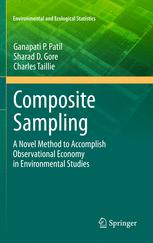

Most ebook files are in PDF format, so you can easily read them using various software such as Foxit Reader or directly on the Google Chrome browser.
Some ebook files are released by publishers in other formats such as .awz, .mobi, .epub, .fb2, etc. You may need to install specific software to read these formats on mobile/PC, such as Calibre.
Please read the tutorial at this link: https://ebookbell.com/faq
We offer FREE conversion to the popular formats you request; however, this may take some time. Therefore, right after payment, please email us, and we will try to provide the service as quickly as possible.
For some exceptional file formats or broken links (if any), please refrain from opening any disputes. Instead, email us first, and we will try to assist within a maximum of 6 hours.
EbookBell Team

0.0
0 reviewsThis monograph provides, for the first time, a most comprehensive statistical account of composite sampling as an ingenious environmental sampling method to help accomplish observational economy in a variety of environmental and ecological studies. Sampling consists of selection, acquisition, and quantification of a part of the population. But often what is desirable is not affordable, and what is affordable is not adequate. How do we deal with this dilemma? Operationally, composite sampling recognizes the distinction between selection, acquisition, and quantification. In certain applications, it is a common experience that the costs of selection and acquisition are not very high, but the cost of quantification, or measurement, is substantially high. In such situations, one may select a sample sufficiently large to satisfy the requirement of representativeness and precision and then, by combining several sampling units into composites, reduce the cost of measurement to an affordable level. Thus composite sampling offers an approach to deal with the classical dilemma of desirable versus affordable sample sizes, when conventional statistical methods fail to resolve the problem. Composite sampling, at least under idealized conditions, incurs no loss of information for estimating the population means. But an important limitation to the method has been the loss of information on individual sample values, such as the extremely large value. In many of the situations where individual sample values are of interest or concern, composite sampling methods can be suitably modified to retrieve the information on individual sample values that may be lost due to compositing. In this monograph, we present statistical solutions to these and other issues that arise in the context of applications of composite sampling.